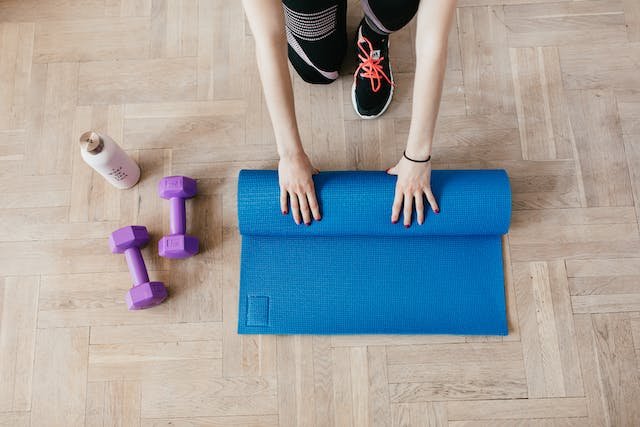Have you ever found yourself scrolling through social media, envying those perfectly equipped gyms in people’s homes? Or maybe you’re just tired of the hassle and crowds at your local gym. Well, it’s time to stop dreaming and start planning your home gym.
Creating your own personal training space in the comfort of your own home is now possible and easier than ever. With a little planning and a little creativity, you can have your own dream gym tailored to your specific needs and fitness goals. Let’s start!
Call the professionals
When building a home gym, it can be tempting to tackle the project yourself. After all, who knows what your fitness needs better than you? However, there are some significant advantages to calling in professionals home addition contractors to handle the job. These experts bring a wealth of experience and expertise to the table, ensuring your custom gym is built to the highest standards.
With professionals on the job, you can be sure the project will be completed safely, efficiently and on time. So why settle for an inferior home gym when you can have a custom plan that meets your fitness goals and exceeds your expectations?
Choose the right equipment
The most critical aspect of designing a home gym is choosing the right equipment. With limited space and a budget to consider, you need to prioritize what you really need for your workout routine. If you’re a beginner, start with the basics like dumbbells, resistance bands and an exercise mat.
As you progress on your fitness journey, you can add more advanced equipment such as a treadmill, stationary bike or weight bench. It’s also important to consider the size and layout of your gym space when choosing equipment. For example, if you have low ceilings, avoid buying tall machines that may not fit comfortably.
Stay within your budget
Designing your home gym doesn’t have to break the bank. Even on a budget, you can create a fully functional and stylish workout space. Here are some tips to keep costs down:
- Buy used equipment – You can often find gently used fitness equipment for a fraction of the cost of buying new. Check online shopping or local garage sales.
- Get creative with DIY projects – Instead of buying expensive equipment, consider building your own using basic materials. For example, you can make a medicine ball by filling an old basketball with sand or gravel.
- Choose multipurpose equipment – Look for equipment that can target multiple muscle groups, such as resistance bands or adjustable dumbbells. This will save space and money.
- Look for discounts and sales – Keep an eye out for sales and promotions at fitness stores or online retailers to save on equipment purchases.
Personalize your space
Your home gym should reflect your personality and motivation. Consider decorating the space with inspirational quotes, posters of your favorite athletes or fitness role models, or even some plants for a touch of greenery.
You can also add elements that make your workouts more enjoyable, such as a TV for entertainment during cardio sessions or a sound system to pump out your jams. Don’t be afraid to get creative and make the space your own.
Integrate technology for smarter workouts
The right technology can help you track, improve and personalize your fitness routine. From fitness trackers to workout apps, technology helps you set goals and track your progress with just a few taps on your smartphone. You can choose from a variety of fitness apps that provide instructional videos, personalized meal plans, or even virtual personal trainers.
The technology allows you to track your calorie intake, measure your heart rate and track your sleep quality to help you optimize your fitness goals. With the right technology at your disposal, you can take your home workouts to the next level and stay motivated on your fitness journey.
Maximize space with smart layout design
Limited space is a common problem when designing home gyms. But with some clever planning, you can make the most of even the smallest areas. Here are some tips for maximizing your gym space:
- Use wall space – Install shelves or hooks to hang resistance bands, jump ropes or yoga mats.
- Collapsible equipment – Look for equipment that can be easily folded and stored, such as folding benches or treadmills.
- Use multifunctional furniture – Consider using a bench that can serve as equipment storage or a yoga mat that can also serve as a stretching area.
- Plan the layout strategically – Make sure to leave enough space between the equipment for safe movement. Place larger machines on walls to free up space in the center.
Designing your home gym is a journey that reflects your personal health and fitness journey — it’s about creating a space that inspires you and enables you to achieve your goals. Whether it’s simplicity and cost-effectiveness that drive your decisions or the pursuit of a fully equipped, state-of-the-art facility, remember that the most important aspect is how the space works for you. Incorporate your unique talent, adopt smart technology for enhanced workouts and design your layout to make the most of the space you have.
